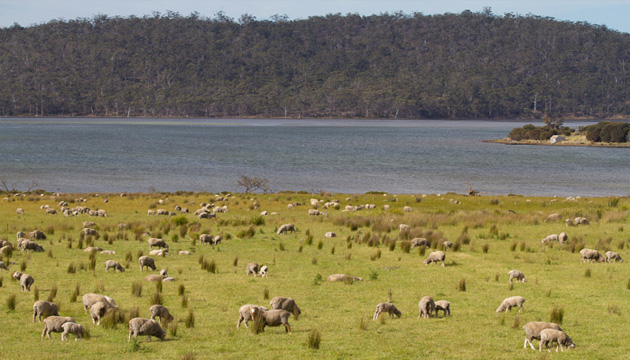Tasmania’s Bangor sheep station has been reborn after a crippling drought and hellish bushfires.
Story By Andrew Bain
Rain is coming over Tasmania’s Forestier Peninsula, but it’s been a while. Dark clouds scrape over the summit of distant Mt Wellington, but the ground at Bangor is dry and thirsty, the grass cover through the sheep runs is thin, and a cloud of dust trails Matt Dunbabin’s ute.
“This is the worst spring I’ve seen,” says Matt as he drives along Bangor’s eastern coastline. “Normally at this time of year it’s green grass up to your ankles out here, but right now you could just about flog a golf ball anywhere on the farm and not lose sight of it.” Things may be dry, but there’s no alarm in Matt’s quiet, studied nature. For him, these are still among the best of times at Bangor.
In January 2013, just a few years after emerging from severe drought, 30 percent of Bangor was burnt in one of Tasmania’s fiercest bushfires. Forty kilometres of fencing was lost, along with 300 sheep and scores of infrastructure. Briefly it looked as though the entire property might be razed.
It was a hellish three weeks and the reminders are everywhere. As he drives, Matt points out the window of the ute towards the coast, where a small flock of Merinos grazes beside a long strip of native bush.
“Here’s where we herded most of the sheep – over 3000 sheep boxed together in 10 hectares,” he says. “We weren’t confident it wouldn’t burn here, but we were determined it wouldn’t.”
It was arguably the most difficult moment in the Dunbabin family’s 125 years on the land at Bangor. Recovery looked years away and yet, less than three years later, Matt was named the 2015 Australian Farmer of the Year and the Diversification Farmer of the Year. One of the most storied farms in Tasmania had not only recovered, it had grown, prospered and changed.
This story excerpt is from Issue #105
Outback Magazine: Feb/Mar 2016










